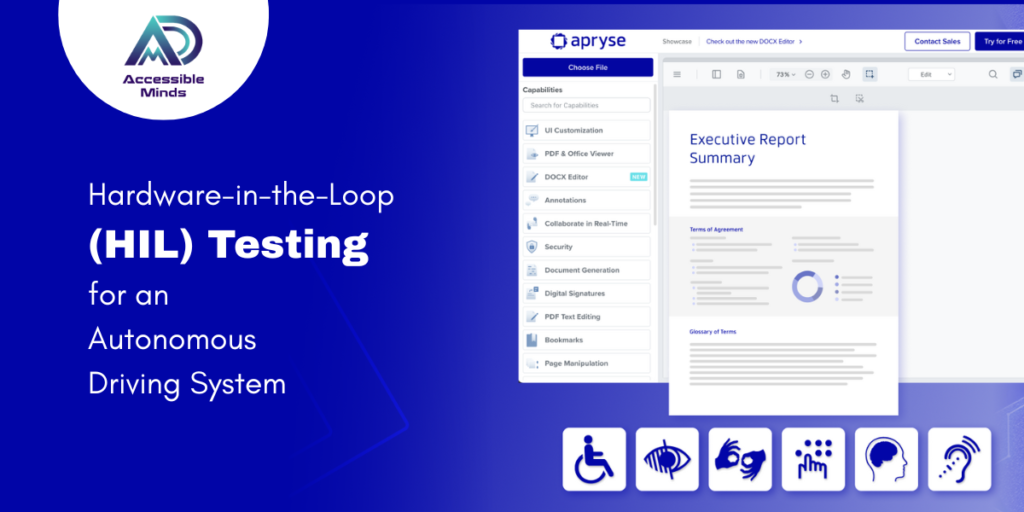Overview
Accessible Minds, a pioneering technology firm specializing in AI-driven mobility solutions, was developing a next-generation autonomous driving system. To ensure the system met rigorous safety, performance, and real-time responsiveness standards, the company sought advanced hardware testing services. They partnered with a leading HIL testing provider to simulate real-world driving conditions and validate system performance before deployment.
Challenge
Autonomous driving systems integrate a complex network of sensors (LiDAR, radar, cameras), actuators, and control algorithms. Testing this intricate system in real-world conditions poses significant risks, high costs, and time-consuming logistics. Accessible Minds needed a solution that could:
- Emulate dynamic real-world scenarios safely and repeatedly.
- Validate hardware behavior under edge cases and fault conditions.
- Ensure tight coupling between hardware and software in real time.
- Accelerate time-to-market without compromising safety or quality.
The company required a scalable and robust hardware testing services partner to conduct comprehensive HIL testing for their Level 4 autonomous driving system.
Solution
The chosen hardware testing partner implemented a state-of-the-art Hardware-in-the-Loop (HIL) testing framework, tailored specifically for autonomous systems. This involved creating a virtual test environment that accurately simulated road conditions, vehicle dynamics, and sensor feedback, all while interfacing with the actual hardware components of the vehicle’s control unit.
Key elements of the solution included:
- Real-Time Simulation Platform: A real-time simulator was integrated to model traffic, pedestrians, weather variations, and road layouts. It sent realistic inputs to the vehicle’s electronic control unit (ECU) in real time.
- Sensor Emulation: Instead of real sensors, synthetic sensor signals were generated to simulate LiDAR, radar, GPS, and camera data, enabling validation of sensor fusion algorithms.
- Fault Injection: The HIL system could simulate various failure modes (e.g., sensor dropouts, actuator delays) to test system resilience.
- Automated Test Suites: Hundreds of test cases were run automatically, allowing for 24/7 regression testing and continuous integration with the development pipeline.
- Data Logging and Analysis: High-resolution logs enabled detailed analysis of system behavior during corner cases, which were critical for training and refining AI models.
Results
Within three months of engaging the hardware testing services, Accessible Minds observed measurable improvements in system performance and project efficiency:
- 40% Reduction in Field Testing Time: The team simulated thousands of complex traffic scenarios in a controlled lab environment, significantly reducing the need for expensive real-world testing.
- Improved Safety Margins: The autonomous system was tested against a wide range of corner cases (e.g., sudden pedestrian crossings, erratic drivers) that would be difficult and dangerous to reproduce on the road.
- Faster Development Cycles: Integration with CI/CD pipelines allowed for rapid iteration and bug fixes, shortening the development timeline by nearly 30%.
- Regulatory Readiness: Comprehensive test documentation and traceability helped meet international safety standards (e.g., ISO 26262, ASIL-D).
Conclusion
By leveraging high-fidelity hardware testing services through HIL testing, Accessible Minds ensured the robustness and reliability of its autonomous driving system—without incurring the costs and risks of extensive on-road trials. This approach not only validated the functionality of critical hardware components under real-time conditions but also enhanced system adaptability and safety.
As the demand for autonomous systems continues to grow, hardware-in-the-loop testing is proving to be an indispensable tool. Accessible Minds’ success demonstrates how advanced hardware testing services can accelerate innovation while upholding the highest standards of safety and performance.

